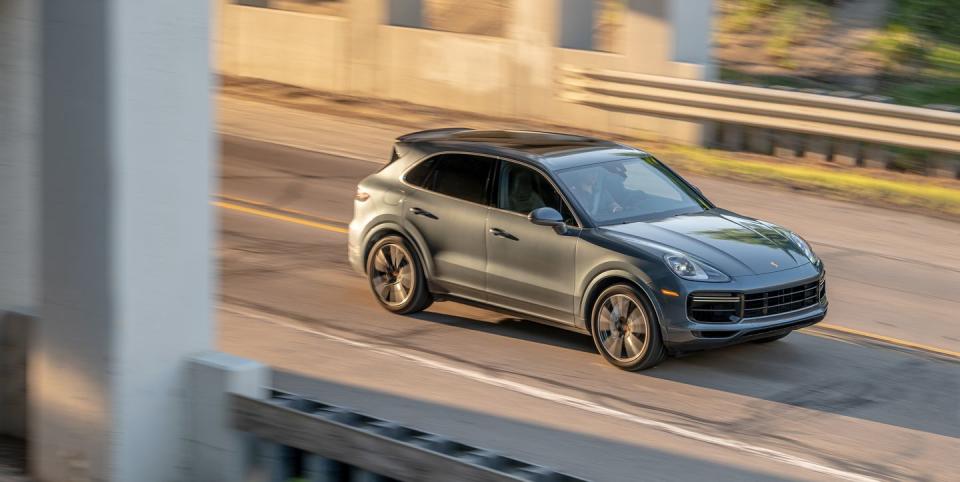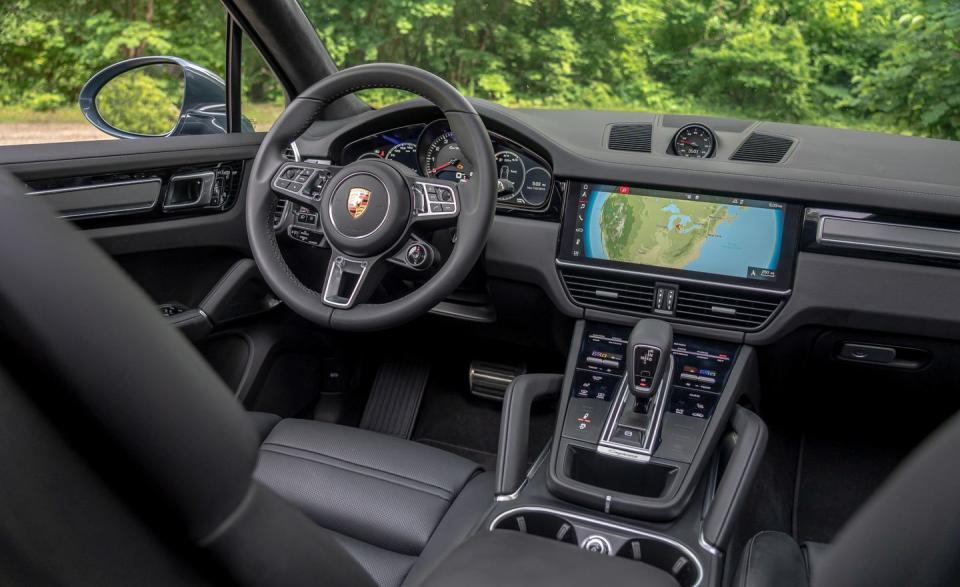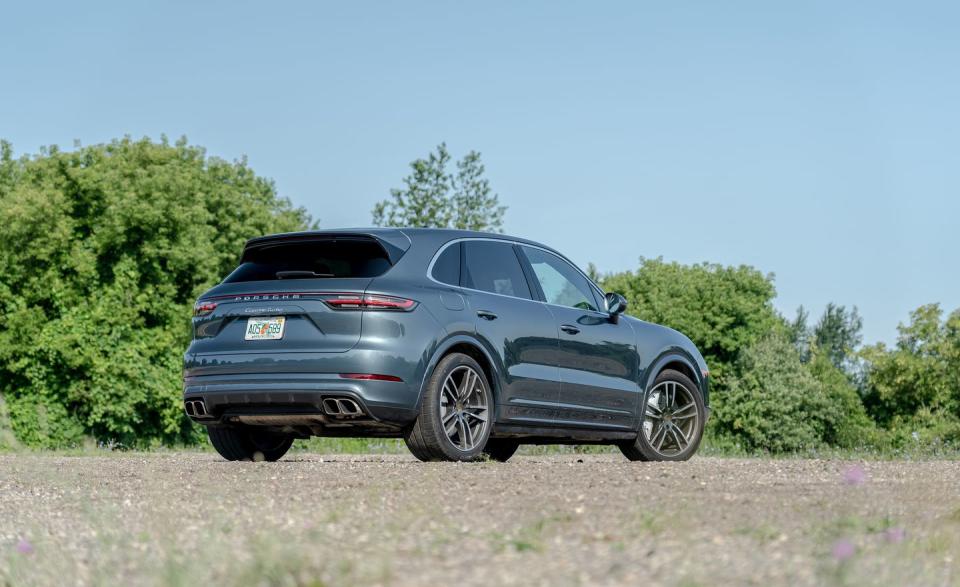2019 Porsche Cayenne Turbo Is the Ultimate Porsche SUV, for Now

If your race car on its trailer weighs less than 7700 pounds, you could tow it to the track behind the 2019 Porsche Cayenne Turbo. But there's a good chance you could drop the car in the paddock and post better lap times in the tow vehicle. While the Turbo reigns as King Cayenne for this first model year of the all-new third-generation Porsche SUV, it really just establishes the baseline for even more absurdly powerful models to come in subsequent model years.
It's one hell of a baseline, though. Aided by a fresh set of dealer-installed Pirelli P Zero Corsa PZC4 summer performance tires ($2110) in their newly staggered widths that put more rubber on the pavement in the rear, this example ripped to 60 mph in a mere 3.5 seconds behind its 541-hp twin-turbo 4.0-liter V-8 and crossed the quarter-mile mark in 12.1 seconds at 115 mph. Partial credit goes to its launch-control system, an element of the $1130 Sport Chrono package. But that feature also played into the performance of the previous-generation Cayenne Turbo S, which needed 3.8 seconds to reach 60 mph and 12.2 for the quarter-mile, despite boasting 29 more horses from its larger twin-turbo 4.8-liter V-8 and weighing 18 pounds less than this portly 5148-pound five-seater.

Not-So-Tiny Dancer
That's hardly the new model's only trick, considering it also defied its mass by clinging to the skidpad with 1.00 g in grip and coming to a full stop from 70 mph in only 150 feet, shading the previous Turbo S by 0.05 g and six feet. Tires again, yes, but also contributing to the stopping performance are Porsche's tungsten-carbide-coated iron brake rotors (PSCB or Porsche Surface Coated Brake) that come standard on the Turbo. With their 10-piston monoblock front calipers and four-piston rears borrowed from Porsche's $5580 carbon-ceramic brake package, these new stoppers pretty much obviate any need to pay the premium for that upgrade unless you really love yellow calipers or will pay any price to avoid brake dust.
The carbon-ceramic brakes also cut a significant amount of unsprung mass from the ride-and-handling equation, yet despite the 21-inch wheels, we didn't feel much harshness in our test car's ride quality, especially considering the performance on offer here. Turbo models also come standard with the three-chamber air springs, which are optional on both the base Cayenne with its turbocharged 3.0-liter V-6 and the Cayenne S with the twin-turbo 2.9-liter six. This Turbo is every bit as well-mannered as the Cayenne S we've touted as the equivalent of a luxury sports sedan, only packing still more power and grip when we dialed all the electronics to red-mist mode.

The Turbo we tested also had the $3590 PDDC (Porsche Dynamic Chassis Control) Sport package with its active anti-roll bars and the accompanying Torque Vectoring Plus ($1500) to aid responsiveness, along with Porsche's rear-wheel steering package, a $1620 option, which helps offset the big front-engined machine's tendency to understeer at low speed and improve stability when traveling faster.
Pay to Play
Aside from a lane-change assist system ($950) and chalk-colored seat belts ($660), our test car had nearly every option that makes the $125,850 Cayenne Turbo more fun to drive fast and almost nothing else from Porsche's extensive catalog of options. That meant it lacked stuff that comes standard on ordinary crossovers that cost $100K less. We noticed this when we walked up to the car expecting to open the door without pushing a button on the key fob, only to find it lacked proximity locking and, when we backed out of the drive, that there was no cross-traffic alert to supplement the legally required rearview camera. Which is to say that, with only about $10K worth of options, this example was pretty Spartan for the top-of-the-line model.

There will be, soon, two even more capable and even more expensive models: a very likely Turbo S variant that will squeeze an unspecified additional chunk of horsepower from the V-8 and the Turbo S E-Hybrid packing the 680-hp combined engine-plus-electric-motor output found in the Panamera Turbo S E-Hybrid Panamera Sport Turismo but mated to a conventional eight-speed automatic and not the Panamera’s eight-speed dual-clutch trans. This "mere" Turbo already could give fits to any of the 707-hp Jeep Grand Cherokee Trackhawks that your buddies might be using to tow their race cars. The Porsche still has a 500-pound towing-capacity advantage over that ultra Jeep, and you'd only need to spend about $40,000 more for the privilege.
You Might Also Like

 Yahoo Autos
Yahoo Autos 